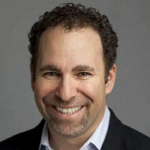A new study, Buyer Mindsets: Health Technology Perspectives from Clinical and Clinical IT Leaders,” from the IDC, and sponsored by Redox, reveals digital transformation as the Key driver for health technology investment upswing in 2023-2024. Many hospitals and health systems are still struggling to recover from one of the toughest financial years on record, yet 88% plan to increase their third-party technology investments in 2023-2024.
“For a long time, providers have thought about integration as connecting one technology to another,” said Luke Bonney, CEO of Redox. “But now, market leaders are thinking beyond that to consider the power of data, and how it can really transform their business.”
But what do our industry leaders actually say about this? Here is what they said when we asked them.
 Dr. Jay Anders, Chief Medical Officer, Medicomp Systems
Dr. Jay Anders, Chief Medical Officer, Medicomp Systems
X: @MedicompSys
X: @medicompdoc
Host of Tell Me Where IT Hurts – #TellMeWhereITHurts
The reason providers are increasing their spending for third-party technologies is because major vendors have failed to produce technology that is useful and helpful to clinicians. Enterprises are realizing that the days of having an EHR that gives nothing back are ending because providers have reached their tolerance limit for systems that only increase their administrative burden. Organizations are now looking to third parties to fix the problem by investing in solutions that can fill the gaps and give clinicians point-of-care tools that enhance their user experience and personalize patient care. As systems become truly interoperable and more data is shared between providers, this will become even more important.
 Ryne Natzke, Chief Revenue Officer, TrustCommerce a Sphere Company
Ryne Natzke, Chief Revenue Officer, TrustCommerce a Sphere Company
X: @SphereCommerce
At the end of the day, healthcare providers are businesses that need to keep up with competition and consumer needs. As technology advancements become part of our everyday life, providers need to invest in digital tools to continue to adapt and grow. Some common areas of investment are in areas that have historically been more manual and hard to scale, including: documentation and forms, billing statements and payments, appointment reminders, and customer/patient support.
 Lyle Berkowitz, MD, CEO, KeyCare
Lyle Berkowitz, MD, CEO, KeyCare
X: @KeyCareInc
Healthcare providers are willing to invest more in technologies that offer a clear ROI, such as expanded access to care to decrease leakage, or to support value-based care initiatives that drive quality bonuses, or to reduce physician or staff burnout. Of particular value to health systems are solutions that allow them to outsource routine, low-value activities to an integrated virtual partner, who can do them faster and cheaper due to economies of scale and asset-light infrastructures. Organizations are making these investments in order to augment their internal staff, and/or to replace third-party solutions that are poorly integrated, expensive to maintain, and difficult to use.
 Gregg Church, President, 4medica
Gregg Church, President, 4medica
X: @4medica
A robust master person index and data enrichment services can help providers reduce the negative impact of fragmented data across the healthcare enterprise. This can lead to improved digital health transformation, which can improve the quality of care while reducing waste in operations. The increase in spending is due to providers need to continue to improve clinical outcomes, financial performance, and reduce legal errors.
 Pawan Jindal, CEO, Darena Solutions
Pawan Jindal, CEO, Darena Solutions
X: @DarenaSolutions
It’s encouraging to see health system leaders endorsing third-party technology. This endorsement empowers tech firms to create vital tools rapidly. Their commitment to data-sharing triggers a groundbreaking leap, outpacing the progress typically made by in-house tech teams. This strategy is set to revolutionize patient care and boost service delivery.
 Calum Yacoubian, MD, Director of Healthcare Strategy, Linguamatics, an IQVIA company
Calum Yacoubian, MD, Director of Healthcare Strategy, Linguamatics, an IQVIA company
X: @Linguamatics
Clinicians acutely feel the impact of fragmented data on their daily workflows and care outcomes. This data fragmentation – along with the need for standardization across disparate sources – is ostensibly a significant driver in the planned adoption of more third-party technologies. We are seeing this push to technology to solve problems now, as healthcare has reached a point where clinician burnout poses an existential threat to healthcare systems. A key part of any technology strategy for these organizations will be tackling the abundance of unstructured healthcare data and making it easily accessible and searchable. This would enable better risk stratification of patients (particularly by their social determinants of health) and better triage of those with higher needs, resulting in reduced wastage of clinical resources.
 Kim Perry, Chief Growth Officer, emtelligent
Kim Perry, Chief Growth Officer, emtelligent
X: @emtelhealth
It’s not surprising that providers are investing in third-party technology to augment their EHRs. As the tech pendulum swung toward maximizing the functionality within the EHR suite, providers found gaps that EHRs simply can’t fill. As gaps are keenly felt in patient experience, provider experience, revenue cycle, and system-wide visibility, the pendulum is swinging back fast. An enormous gap that affects providers and payers alike is access to clinical data when 80% of it is unstructured text – a more natural medium for providers documenting patient care, but not machine readable. Medical NLP technology can unlock that data, unleashing its value across provider productivity, patient care, revenue cycle and a host of other processes.
 Jay Ackerman, CEO & President, Reveleer
Jay Ackerman, CEO & President, Reveleer
X: @reveleer
In today’s healthcare landscape, providers grapple with accessing and managing the exponential surge in clinical data. To effectively harness this data for enhanced patient care, AI technology emerges as a pivotal solution. By synthesizing disparate data, analyzing, and providing accurate suggestions for care gap closure, AI-driven solutions enable healthcare professionals to access comprehensive patient records in real time, leading to more informed patient encounters. One of the most remarkable benefits is the unprecedented access to longitudinal patient data previously beyond reach. Now, providers can effortlessly tap complete patient history, with actionable insights embedded directly in the EHR, to drive improved care quality and outcomes. Most importantly, AI-driven workflows lift administrative burden, allowing providers to focus on delivering exceptional care.
 Rebecca Mitchell, MD, Executive Vice President, Vive Collective
Rebecca Mitchell, MD, Executive Vice President, Vive Collective
X: @vivecollective
Near term, pure tech plays should focus on boosting throughput and quality without further exhausting physicians in the current care delivery models. Scaling up care models calls for providers to augment clinical services in addition to IT. We are seeing a trend of virtual and in-home care companies wrapping existing healthcare systems and establishing preferred referral networks.
 Adam McMullin, CEO, AvaSure
Adam McMullin, CEO, AvaSure
X: @AvaSure
We work with more than 1,000 hospitals and we are definitely seeing an appetite for additional investments in technology this year. This is largely driven by structural staffing shortages, the aging population, and the need for healthcare systems to care for more patients more efficiently. We are seeing a huge demand for in-patient virtual care solutions, starting with sitting, to reduce harm while lowering costs. Sitting improves step function, the experience of the care team and the patient, and provides a 10X return on investment. With AI enhancements, virtual care technology can play an even bigger role in helping to leverage experts most effectively and where needed by automating tasks and augmenting the expertise of clinicians.
 Nick Hedges, CEO, Raintree Systems
Nick Hedges, CEO, Raintree Systems
X: @RaintreeSystems
Healthcare organizations are prepared to make larger investments in technology in order to both alleviate the shortage of clinicians and attract top talent. Recruitment of clinicians and therapists to your practice might be challenging if you don’t know how to stand out, especially with the healthcare labor crisis projected to last for several more years. The best professionals seek employment in settings that enable them to deliver the greatest caliber of care and superior patient experiences. This entails having access to cutting-edge tools and technologies.
